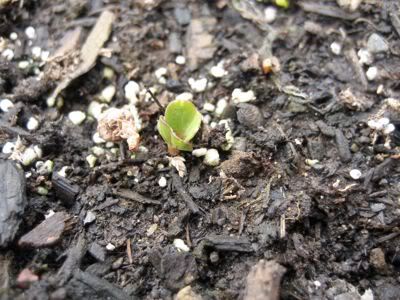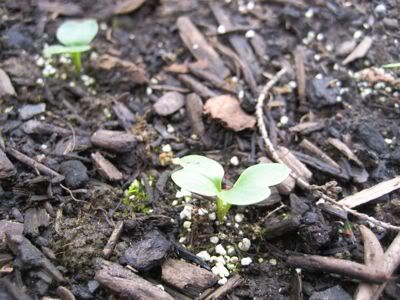28-32 days. Radishes in a rainbow of colors-red, white, and purple-all grow from the same packet. Excellent interior quality; these 3/4-1 inch globes remain firm, crisp, and tender well beyond the stated maturity. Great choice for the children's garden. An equal blend of Ruby, Plum Purple, and Snow Belle. OP
Raphanus sativus: Radishes grow best when sown in spring or late summer so they mature when days are shorter, sunlight is weaker, and temperatures are lower. Some varieties, like Cherry Belle and Easter Egg II, are more able to handle summer conditions. Modern breeders consider short tops desirable in radishes because small-topped plants can be spaced closer, resulting in higher yields. However, when the gardener does not spray repeatedly or use a crop row cover for flea beetle control, short tops are a serious liability.
CULTURE: Direct sow radish seed in the garden March through September. The season may be extended from October through February by sowing in cold frames or a greenhouse. Although they do better in moderately fertile soil, radishes will successfully mature almost anywhere. Prepare the bed by working compost into the top 2-3 inches of soil. Sow seeds 1/2 inch deep, and about a 1/2 inch apart, in rows 8-12 inches apart. Seedling will emerge in 4-11 days when the optimum soil temperature range of 45-80°F is achieved. It is essential to thin promptly to 1-2 inches apart in the row. Radishes have shallow root systems and need abundant water. Dry or crowded conditions will slow growth and make roots hot or pithy.
INSECTS: Flea beetle damage (pinholes in leaves) can reduce the growth rate and quality of radishes. Control heavy infestations by frequent spraying with a Rotenone-Pyrethrin spray or using an insect barrier or row cover such as Reemay or Grow Guard 20. Root maggot populations can also be reduced by using a row cover. You can reduce the amount of time (and therefore the damage) that root maggots have to invade the radish root by encouraging rapid growth, followed by prompt harvesting.
DISEASE: Almost completely disease-free.
HARVEST: Harvest promptly before they become pithy, split, or get hot. Make multiple sowings for a steady supply throughout the season. You can also let a few plants bolt or go to pod. Pick immature when they are 1/2 inch long for crunchy, mild radish pods. Keeps your salads and stir-fries spiced up all summer long. Store at 34°F and 95% relative humidity.
SEEDS SPECS: Minimum germination standard: 80%. Days to maturity calculated from date of direct seeding. Usual seed life: 4 years. Approximately 80 seeds per gram; 28 grams per ounce. A sampler will sow 7-8 row feet.
----------
PURCHASED: 1/2g from Territorial Seed Co. Jan '09. $2.85
DIRECT SEEDED: Set down seeds on 03/13/09.
DISEASE ISSUES:
INSECT ISSUES:
HARVEST YEILD & DURATION:
OTHER NOTES:
03/23/09

03/30/09

1 comment:
Jenn,
We are ahead of the game here on you. We planted these radishes on March 08 they are coming up nicely.
Post a Comment